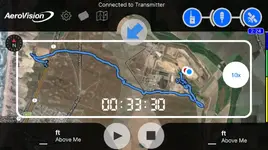What about the kind of transmitters used to track wild birds? Like if they stick a GPS tracker on an albatross for research, that has to have a longer life than 2 hours? Perhaps people who make trackers for wildlife aren't aware of a potential market for parrot owners.
From what I recall in my studies, the average GPS trackers they use for wild birds are hugely heavy and unfortunately only work with large birds. There's still no solution for medium to small sized birds for ornithologists that are effective, let alone affordable for multiple use. They're still trying to figure out ways as researching small birds is just as important, but currently all they can do is tag them with leg bands and then follow the actual flock to different locations and identify those individuals later. The little birds don't have enough strength or the batteries currently being used do not have a light enough weight to be placed on them [emoji20] And like Sailboat mentioned, the range is just far too small at the moment for those smaller birds.
Another alternative would be having a bird physically wearing something, such as a harness, that could hold a piece of equipment for tracking purposes. It's far easier to attach something to a harness than it is to the bird itself, and it also provides greater surface area to work with, which in turn means more equipment is available to choose from. With the way technology is developing, chances are you could have small solar cells that are rechargeable through sunlight, and small enough to be placed on a smaller bird's back or chest area of the harness. That being said, you then have the difficulty of preventing the bird from damaging the equipment itself and sabotaging its own tracking.
And that brings us back to having a microchip with GPS capabilities, but something such as that would require a charge to remain active and that could potentially be dangerous to the bird if placed internally. From there, you also have to consider how cost effective it is to implement that technology for the average person, as for every tracker you implement you need the coordinating material to being able to track it and read where it is.
I have no doubt that one day it will be available, but at the moment we simply don't have enough research being dedicated to something like this for the average pet owner. Ornithologists have been struggling for years on how to implement them, but I'm sure when they figure it out it will be huge amongst Falconry crowds and then in turn parrot crowds [emoji4]
Here's a great article released relatively recently regarding the complications of implementing a non-invasive GPS tracker for birds 400+ grams:
http://link.springer.com/article/10.1007/s10336-012-0908-1






